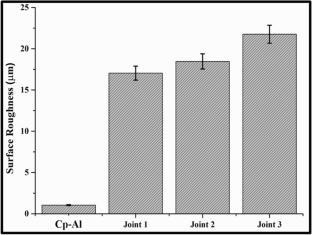Mechanical and electrochemical behaviour of electron beam welded commercially pure aluminium using oscillating beam
Abstract
The present study evaluates the effect of beam oscillation on the mechanical and electrochemical properties of electron beam welded commercially pure aluminium. The circular beam oscillation diameters of 1 mm and 2 mm have been used while keeping all the other welding parameters constant. The churning effect of beam oscillation led to the formation of a broader fusion zone compared to static beam joint. The fusion zone of a static beam weld consists of equiaxed and columnar structures, while the fusion zone of an oscillated beam weld mainly consists of equiaxed structures. The joints produced using beam oscillation have less porosity (0.01%) than static beam joint (0.02%). Also, the pores were more evenly distributed in the oscillated beam joints. The application of circular beam oscillation of diameters 1 mm and 2 mm increased the microhardness (56 VHN and 58 VHN) as compared to the static beam joint (52 VHN) and base metal (45 VHN). The tensile strength of aluminium (102 MPa) decreased slightly after electron beam welding (99 to 91 MPa). Beam oscillation reduced the tensile strength further (91 MPa and 93 MPa) as compared to the static beam joint (99 MPa), whereas the percentage elongation increased (9 to 17%) due to beam oscillation. Beam oscillation has reduced the corrosion rate from 0.02 mm/year (base metal) to 0.001 mm/year (oscillated beam weld). The mechanism of variation in mechanical and electrochemical properties of electron beam welded aluminium with the application of beam oscillation has been established.



 求助内容:
求助内容: 应助结果提醒方式:
应助结果提醒方式:


